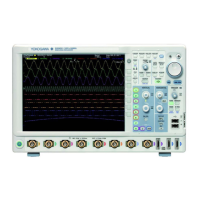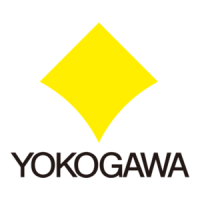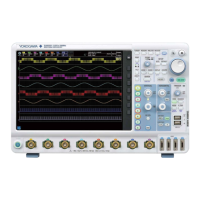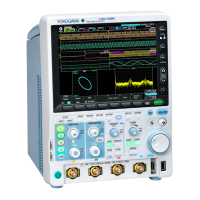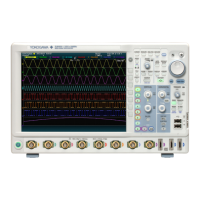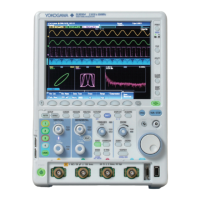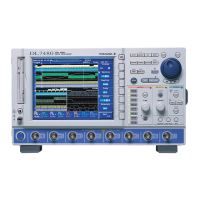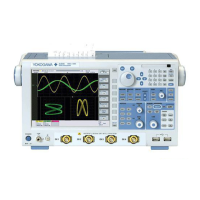5-138
IM 710105-17E
:MEASure:{CHANnel<x>|MATH<x>}:<Param
eter>:STATe
Function Sets or queries the on/off status of a waveform
parameter.
Syntax
:MEASure:{CHANnel<x>|MATH<x>}:<Parame
ter>:STATe {<Boolean>}
:MEASure:{CHANnel<x>|MATH<x>}:<Parame
ter>:STATe?
<x> of CHANnel<x> = 1 to 4 (1 or 2 for 2-channel
models)
<x> of MATH<x> = 1 or 2 (1 only for 2-channel
models)
<Parameter> = {AMPLitude|
AVERage|AVGFre
q|AVGPeriod|BWIDth|DELay|DT|DUTYcycl
e|ENUMber|FALL|FREQuency|HIGH|LOW|MA
Ximum|MINimum|NOVershoot|NWIDth|PERi
od|PNUMber|POVershoot|PTOPeak|PWIDth|
RISE|RMS|SDEViation|TY1Integ|TY2Integ
|V1|V2
}
Example (Below is an example for the average of CH1.)
:MEASURE:CHANNEL1:AVERAGE:STATE ON
:MEASURE:CHANNEL1:AVERAGE:STATE?
-> :MEASURE:CHANNEL1:AVERAGE:STATE 1
:MEASure:{CHANnel<x>|MATH<x>}:<Param
eter>:VALue?
Function Queries an automatically measured value of a
waveform parameter.
Syntax
:MEASure:{CHANnel<x>|MATH<x>}:<Parame
ter>:VALue? [<NRf>[,STATus]]
:MEASure:{CHANnel<x>|MATH<x>}:<Parame
ter>:VALue?
<x> of CHANnel<x> = 1 to 4 (1 or 2 for 2-channel
models)
<x> of MATH<x> = 1 or 2 (1 only for 2-channel
models)
<Parameter> = {
AMPLitude|AVERage|AVGFre
q|AVGPeriod|BWIDth|DELay|DT|DUTYcycl
e|ENUMber|FALL|FREQuency|HIGH|LOW|MA
Ximum|MINimum|NOVershoot|NWIDth|PERi
od|PNUMber|POVershoot|PTOPeak|PWIDth|
RISE|RMS|SDEViation|TY1Integ|TY2Integ
|V1|V2
}
<NRf> = See the DLM2000 Features Guide for
this information.
Example (Below is an example for the average of CH1.)
:MEASURE:CHANNEL1:AVERAGE:VALUE?
-> :MEASURE:CHANNEL1:AVERAGE:VALUE 10
.0000E+03
Description• If the value is immeasurable, the DLM2000
returns “NAN” (not a number).
• The <NRf> is used to specify which iteration of
automated measurement to query the measured
value from.
• If <NRf> is set to 1, the oldest measured value
in the automated measurement memory is
queried.
• If a measured value does not exist at the
specified iteration, the DLM2000 returns “NAN”
(not a number).
• If <NRf> is omitted, the most recent measured
value is queried.
• If cyclic statistical processing for automated
measurement is being executed and <NRf> is
specified, the measured values over a cycle in
iteration <NRf> from the left of the display on
the displayed waveform is queried. If <NRf>
is omitted, the measured values over the last
cycle on the displayed waveform is queried.
• The last parameter “STATus,” which can be
omitted, is valid when the parameter is “FALL,”
“NWIDth,” “PERiod,” “PWIDth,” or “RISE.”
When “STATus” is omitted, the DLM2000
returns negative values of these parameters
when the measured values are less than the
measurement resolution. When “,STATus” is
included, the DLM2000 returns “LOW_RESOL.”
:MEASure:{CHANnel<x>|MATH<x>}:COPY
Function Copies the on/off status of all measurement items
of a waveform to all other waveforms.
Syntax
:MEASure:{CHANnel<x>|MATH<x>}:COPY
<x> of CHANnel<x> = 1 to 4 (1 or 2 for 2-channel
models)
<x> of MATH<x> = 1 or 2 (1 only for 2-channel
models)
Example
:MEASURE:CHANNEL1:COPY
:MEASure:{CHANnel<x>|MATH<x>}:CYCLe
Function Sets or queries a cycle mode.
Syntax
:MEASure:{CHANnel<x>|MATH<x>}:
CYCLe {ONE|N|OFF}
<x> of CHANnel<x> = 1 to 4 (1 or 2 for 2-channel
models)
<x> of MATH<x> = 1 or 2 (1 only for 2-channel
models)
Example
:MEASURE:CHANNEL1:CYCLE ONE
:MEASURE:CHANNEL1:CYCLE?
-> :MEASURE:CHANNEL1:CYCLE ONE
5.20 MEASure Group
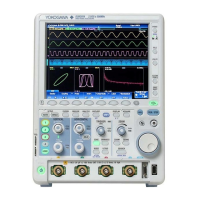
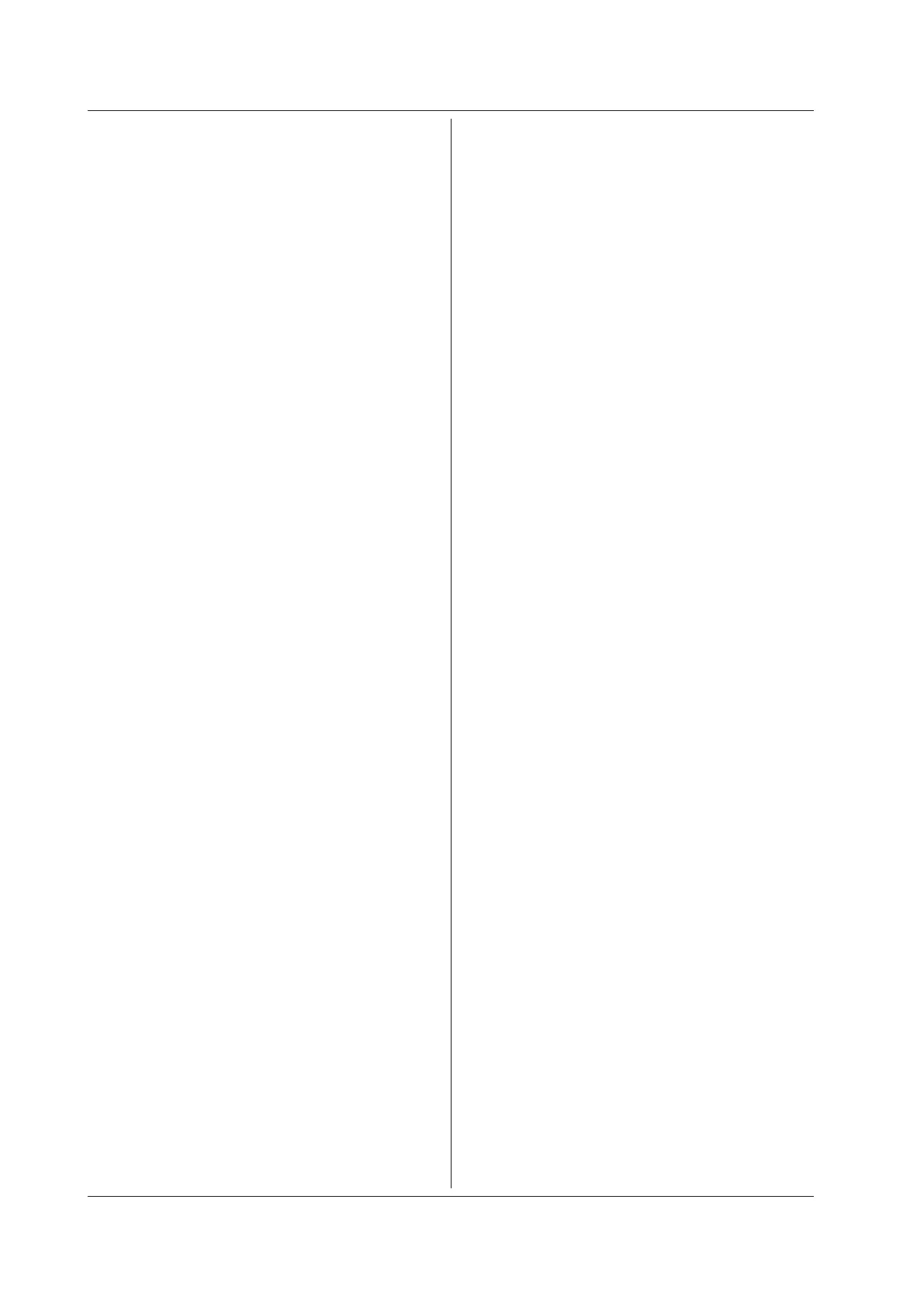